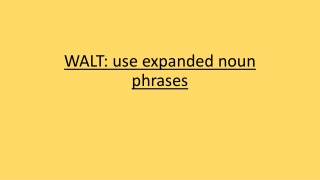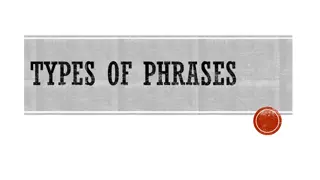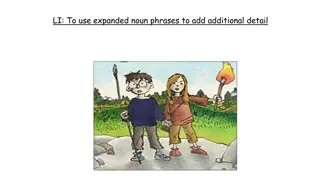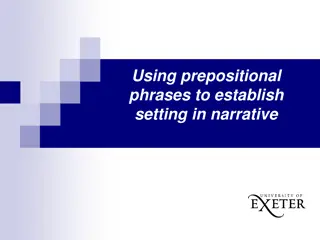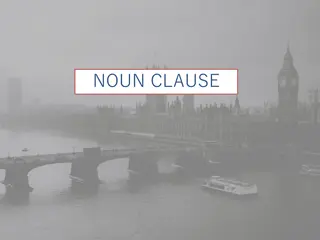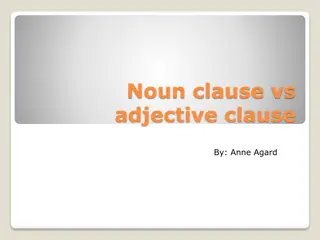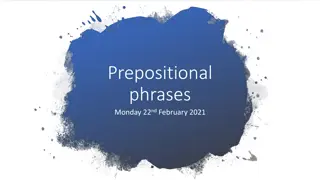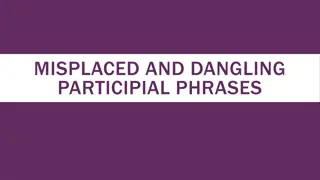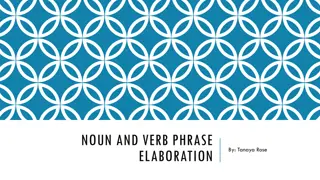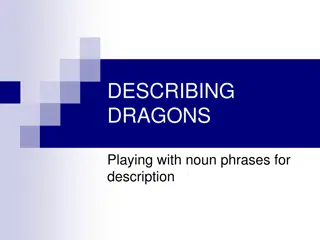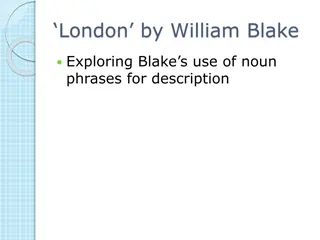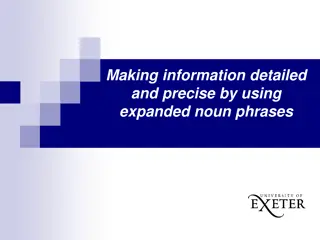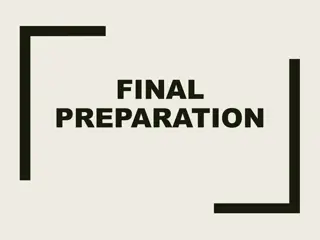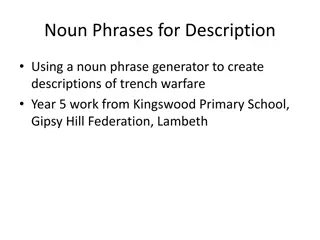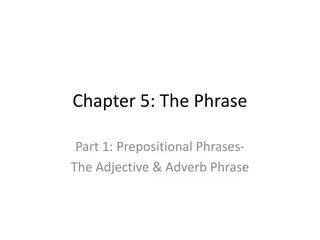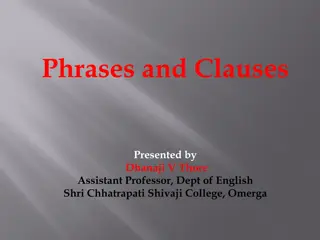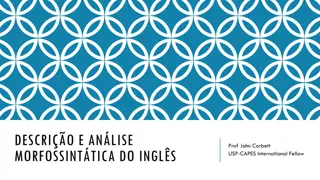Exploring Setting Through Noun Phrases in Narrative Descriptions
Establishing setting in narrative through the use of descriptive noun phrases is crucial for creating a vivid and immersive atmosphere. By carefully selecting and arranging nouns, authors can evoke specific moods and engage readers in a detailed visual experience. This approach enhances the overall storytelling and allows for deeper exploration of the environment within a narrative context.
Download Presentation

Please find below an Image/Link to download the presentation.
The content on the website is provided AS IS for your information and personal use only. It may not be sold, licensed, or shared on other websites without obtaining consent from the author. Download presentation by click this link. If you encounter any issues during the download, it is possible that the publisher has removed the file from their server.
E N D
Presentation Transcript
Using noun phrases to establish setting in narrative
LEAD Principles PRINCIPLE LINKS EXPLANATION RATIONALE To establish a purposeful learning reason for addressing grammar, and connect grammar with meaning and rhetorical effect Make a link between the grammar being introduced and how it works in the writing being taught To avoid writing lessons becoming mini- grammar lessons, and to allow access to the structure even if the grammar concept is not fully understood To integrate reading and writing and show how real writers make language choices EXAMPLES Explain the grammar through examples, not lengthy explanations AUTHENTIC TEXTS Use authentic texts as models to link writers to the broader community of writers To promote deep metalinguistic learning about why a particular choice works, and to develop independence rather than compliance DISCUSSION Build in high-quality discussion about grammar and its effects
Noticing Patterns in a Text Authentic text old chests of drawers broken wash-basins bags of cement ancient doors leaning against the walls deckchairs with the cloth seats rotted away great rolls of rope and cable heaps of water pipes great boxes of rusty nails spiders webs mortar that had fallen from the walls a little window in one of the walls filthy rolls of cracked lino standing in front of it something scratching in one of the corners something scuttling about Discussion Look at how this garage is described. What strikes you most about the objects in it?
Noticing Patterns Links Noun phrases can be used in a narrative to create precise visual description of a setting and to create a distinctive mood and atmosphere. There were old chests of drawers and broken wash-basins and bags of cement, ancient doors leaning against the walls, deckchairs with the cloth seats rotted away. Great rolls of rope and cable hung from nails. Heaps of water pipes and great boxes of rusty nails were scattered on the floor. Everything was covered in dust and spiders webs. There was mortar that had fallen from the walls. There was a little window in one of the walls but it was filthy and there were rolls of cracked lino standing in front of it. The place stank of rot and dust. Even the bricks were crumbling like they couldn t bear the weight any more. It was like the whole thing was sick of itself and would collapse in a heap and have to get bulldozed away. I heard something scratching in one of the corners, and something scuttling about, then it all stopped and it was just dead quiet in there. Examples Discussion Look at how this garage is described. What strikes you most about the objects in it? What does the writer want us to think or feel about this place?
Verbalising the Grammar-Writing Link A crucial element of the LEAD principles is helping writers to think explicitly (metalinguistically) about the choices they make. As a teacher, you need to support this by being crystal clear yourself about how you verbalise the link between a grammar choice and its effect in a particular text/context. Then express this in student-friendly language, as below. Verbalisation to share with students: When you are writing narrative, you can think about how you help your reader to visualise a setting at a key moment. You might use noun phrases that provide specific visual detail and that create a distinctive mood and atmosphere. Choose your details carefully! Ask yourself what you want your reader to see, think and feel about the setting that you re describing.
Imagine this abandoned, derelict house is the setting for a strange tale. Can you list noun phrases that will help your reader visualise the setting and that create a mood and atmosphere of mystery and foreboding?


